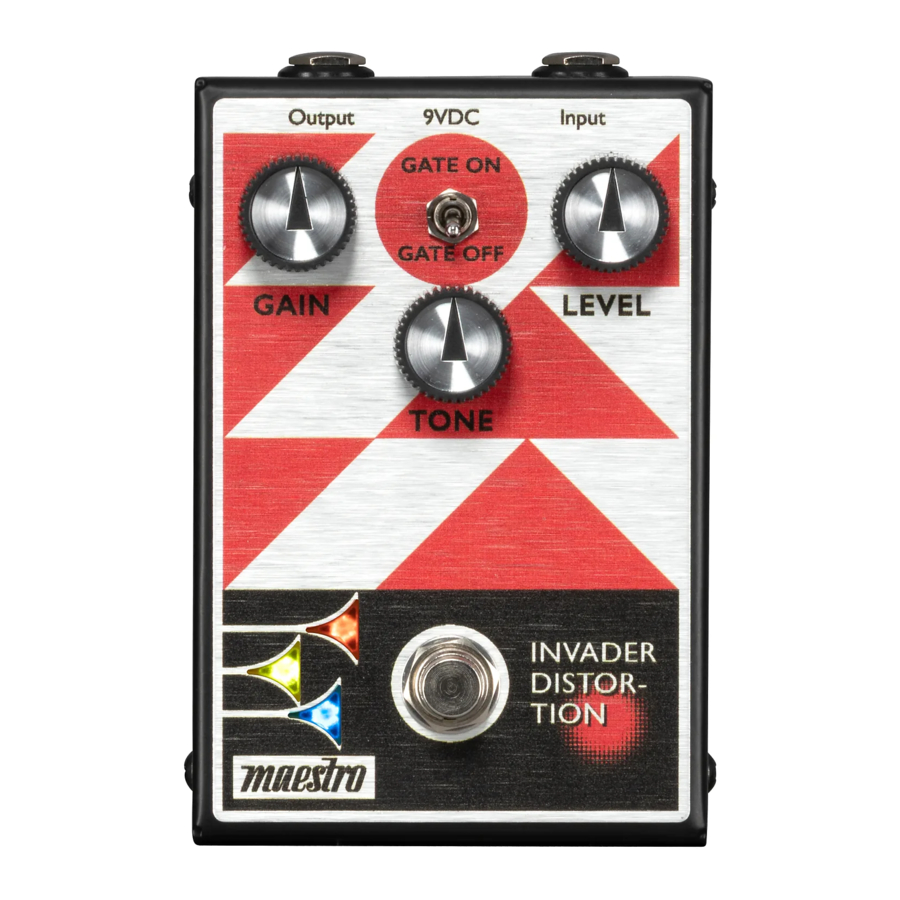
Advertisement

Introduction
Maestro, despite the common misconception, didn't start as a pedal brand. Gibson marketed a line of accordion amplifiers under the name as early as 1955. Many guitarists will also be familiar with the classic Maestro Vibrola tailpiece, which was introduced in the 60s. But we're talking pedals here, right? The very first Maestro pedal (and the very first commercially available distortion pedal) wasn't much of a hit - at least not when the Fuzz-Tone FZ-1 was first released in 1962. But when Keith Richards of the Rolling Stones used one for the classic riff on (I Can't Get No) Satisfaction, everything changed, and the Fuzz-Tone became a must-have accessory for guitarists everywhere and launched the pedal craze that continues right up until today. Other Maestro fuzz pedals followed the original FZ-1, including the FZ-1A in 1965, the Robert Moog-designed FZ-1B in 1968, and the 70s era FZ-1S, MFZ-1, and BB-1 Bass Brassmaster.
Wah pedals were also first introduced in the 1960s, and two of the most sought-after on the vintage market are the Maestro BG-1 and BG-2 Boomerang Wah pedals. While exceptionally hard to find today, you have probably heard one before - legendary Stax Records session ace Charles "Skip" Pitts used one for the wah guitar parts on the original 1971 recording of the Theme from Shaft.
Another legendary effect that Maestro pioneered is the Echoplex, which was first released under the Maestro brand in 1962. (Echoplex is now a registered trademark of Dunlop Manufacturing.) An Echoplex uses magnetic tape and a moving-head design to create echo and delay effects of various lengths. While they aren't pedals, the tube-based EP-1 and EP-2 models were among the first delay units on the market, and many effect connoisseurs still consider them the standard that every other delay is measured against. The Echoplex remained available in the 1970s in the form of the solid-state EP-3 and EP-4 models.
Speaking of the 70s, it was the era when effects really started to gain widespread popularity with musicians in general and guitarists in particular and Maestro was in the thick of it, offering several classic units, including some models that were designed by the legendary Tom Oberheim. Tom was responsible for both the first Ring Modulator pedal (the Maestro RM-1), and the Maestro PS-1, the first Phase Shifter pedal. Oberheim's involvement with Maestro ended in 1973 when Gibson's then-owner Norlin acquired Moog, and Moog took over the design and manufacture of Maestro effects pedals, which they continued to do until Norlin discontinued production of Maestro pedals in 1979.
Now Gibson is bringing Maestro back and is committed to the same spirit of excellence, innovation, and quality that the brand represented in its first incarnation. The pedal in your hands is proof of Gibson's dedication to excellence in effect pedal innovation. Please continue reading the rest of this manual to learn about its features and operation, as well as important safety, maintenance, and warranty information.
There's a whole universe of sonic possibilities out there. We invite you to participate in a new era of exploration and discovery with Maestro.
QUICK START GUIDE
Your new Maestro pedal is equipped with a 3-knob feature set and a mode toggle switch that provides "two pedals in one" functionality and delivers increased sonic versatility. It also features sturdy construction and distinctive graphic elements with brushed aluminum decals inspired by vintage Maestro pedals and illuminating Maestro logo bugles to indicate when the effect is active. The Maestro Invader Distortion is designed to deliver a wide range of distorted sounds, and is mean, dominant and vibrant; amp-like and versatile.

- GAIN Adjusts the amount of distortion.
- TONE Functions as a traditional tone control/variable Low Pass Filter (LPF).
- LEVEL Adjusts the output level of the pedal.
- MODE SWITCH GATE ON (Up Position) - Engages a built-in noise gate to reduce noise and hiss when you're not playing. GATE OFF (Down Position) - Bypasses the built-in noise gate.
- FOOTSWITCH Turns the effect on and off.
- LED INDICATORS Illuminate when the effect is active.
- INPUT 1/4" input jack for your instrument.
- POWER Power adapter jack. (Wired center-negative, sleeve-positive)
- OUTPUT 1/4" output jack for connection to other effects or your amplifier.
- INTERNAL TRIM POT An internal trim pot on the circuit board allows the user to adjust the level of the noise gate's Threshold. Using a small screwdriver, turn this control up for a higher Threshold level, and down for a lower Threshold level.
Documents / ResourcesDownload manual
Here you can download full pdf version of manual, it may contain additional safety instructions, warranty information, FCC rules, etc.
Advertisement



Need help?
Do you have a question about the INVADER DISTORTION and is the answer not in the manual?
Questions and answers